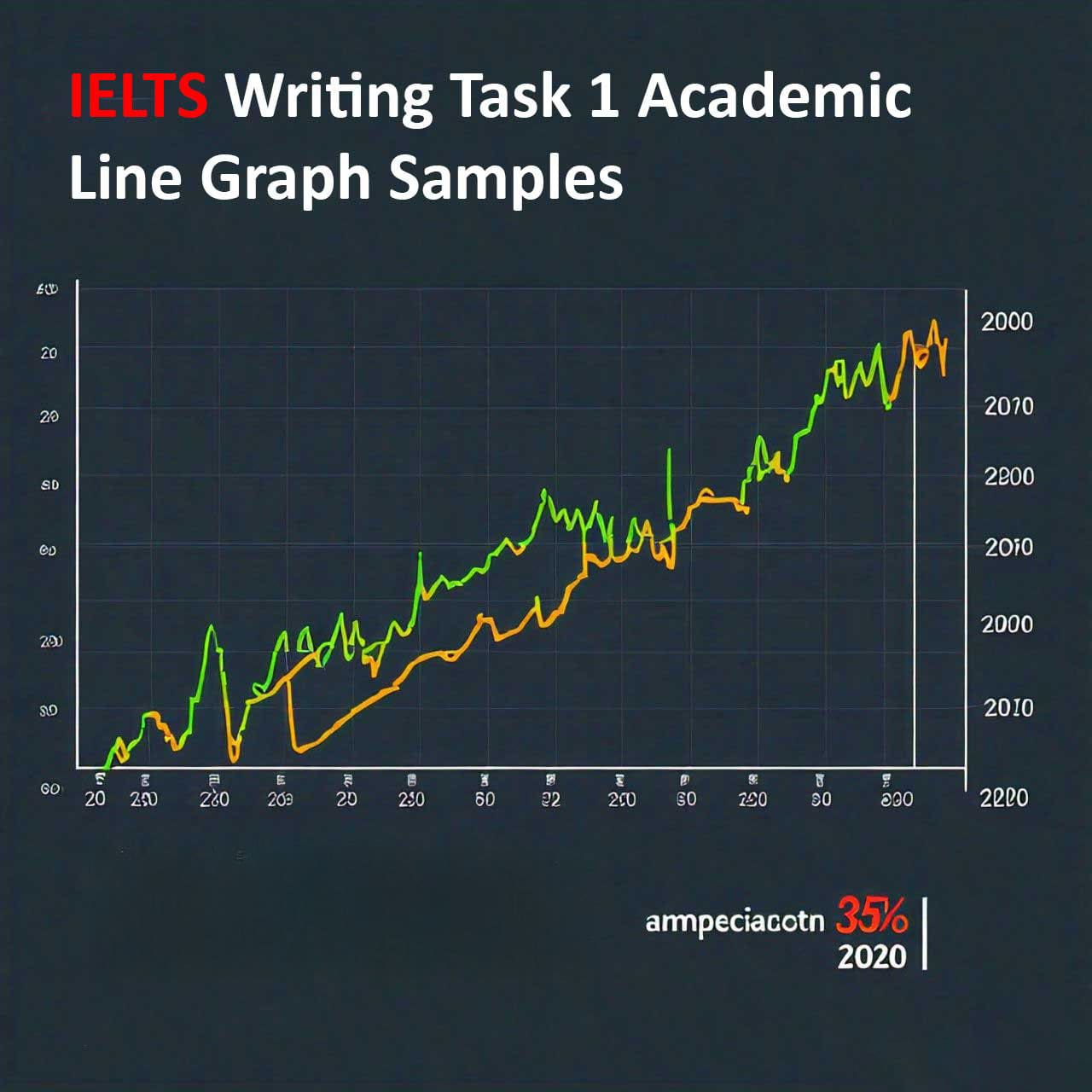The IELTS Writing Task 1 Academic module requires candidates to describe and interpret visual data presented in the form of graphs, charts, tables, or diagrams. One common type of visual data is the line graph, which displays changes over time. This task assesses your ability to accurately report information, identify trends, and compare data. In this blog post, we will explore the format of IELTS Writing Task 1 Academic line graphs, provide sample responses, and offer tips to help you excel in this section of the exam.
Table of Contents
Understanding IELTS Writing Task 1 Academic Line Graphs
A line graph in the IELTS context typically presents data showing changes or trends over a period of time. This could include changes in temperature, population growth, sales figures, or any other measurable data points over months, years, or decades. Your task is to summarize the information presented in the graph and highlight significant trends or patterns.
Key Components of a Line Graph
1. Title: Describes the main topic or subject of the line graph.
2. Axes: Typically, the horizontal axis (x-axis) represents time (e.g., years, months), while the vertical axis (y-axis) represents numerical data (e.g., quantities, percentages).
3. Data Points: Points plotted on the graph to indicate values at specific times.
4. Trend Lines: Lines connecting data points to show trends or patterns over time.
Now, let’s look at some sample prompts and corresponding responses for IELTS Writing Task 1 Academic line graphs:
Sample Line Graph Samples
Prompt: The line graph below shows the annual number of visitors to a city museum from 2010 to 2020. Summarize the information by selecting and reporting the main features and make comparisons where relevant.
Sample Response:
The line graph illustrates the annual visitor numbers to a city museum from 2010 to 2020.
Overall, there was a gradual upward trend in visitor numbers over the decade. In 2010, approximately 50,000 visitors attended the museum, which steadily increased to peak at around 80,000 visitors in 2017. After 2017, there was a slight decline in visitor numbers, with figures dropping to about 75,000 visitors by 2020.
From 2010 to 2015, there was a steady increase in visitor numbers each year. The most significant growth occurred between 2015 and 2017, where visitor numbers surged from around 60,000 to the peak of 80,000 visitors.
In conclusion, while there was a general upward trend in visitor numbers to the city museum over the decade, there was a slight decline in recent years, ending at approximately 75,000 visitors in 2020.
Prompt: The line graph below shows the average temperatures in a city over a year. Summarize the information by selecting and reporting the main features and make comparisons where relevant.
Sample Response:
The line graph depicts the average temperatures in a city across the four seasons of a year.
Overall, the city experiences significant fluctuations in temperature throughout the year, with the highest temperatures occurring in summer and the lowest in winter. In January, the average temperature starts at approximately 5°C and gradually increases to reach a peak of around 25°C in July. From July onwards, temperatures begin to decline steadily, reaching their lowest point of about 0°C in December.
Spring and autumn show transitional periods with moderate temperatures, ranging between 10°C and 20°C. Notably, there is a sharp increase in temperature from March to June, followed by a gradual decrease from August to December.
In conclusion, the line graph illustrates the seasonal variation in average temperatures, with peak temperatures in summer and lowest temperatures in winter, showcasing the city’s climate fluctuations throughout the year.
Tips for Excelling in IELTS Writing Task 1 Academic Line Graphs
1. Analyzing Trends: Identify and describe significant trends, peaks, declines, or fluctuations in the data presented.
2. Comparing Data: Make comparisons where relevant, such as comparing different years, seasons, or categories presented in the graph.
3. Organizing Your Response: Structure your response logically with an introduction (paraphrasing the prompt), body paragraphs (describing main features and trends), and a conclusion (summarizing key points).
4. Using Descriptive Language: Use a variety of descriptive language to accurately portray the data and trends shown in the graph.
5. Practice Time Management: Practice writing under timed conditions to improve your ability to complete the task within the allotted 20 minutes.
By practicing with these sample line graphs and following the tips provided, you can enhance your skills in describing and analyzing data for IELTS Writing Task 1 Academic. Regular practice, reviewing feedback from teachers or peers, and focusing on improving your coherence and accuracy will help you achieve success in this section of the exam. Best of luck!
This blog post aims to guide you through the process of effectively interpreting and describing line graphs for IELTS Writing Task 1 Academic, offering practical examples and actionable tips to boost your preparation and confidence on test day.



